Continued from page 2
Choosing solidThinking Evolve and Inspire for Design and 3D Printing
AFR: Are there some specific benefits in using Evolve and Inspire? What drove you to using these tools?
NH: Sure. So when I did the break caliper, I was using SolidWorks and the way you work in that program you setup orthogonal planes and you sketch 2D profiles on those planes. Then you extrude those profiles into 3D forms. However, when you to try creating more organic types of forms—which is what we wanted to do with the caliper—it starts to become very limiting. That software is a design tool that has mainly traditional manufacturing processes in mind, such as X, Y, Z axis tool paths on a CNC mill bed. Everything is either a box or a cylinder. So I started looking around and found solidThinking Inspire.
I was so impressed by how in Inspire you can apply real forces and loads on a part and the program would optimize its form to account for those loads, removing mass from the part that was un-used, structurally. (see image 02 above) And then you can take that optimized form and put it into Evolve and continue to refine it. solidThinking Evolve is really a pure 3D modeling tool and actually one of the easiest such tools that I have come across. You can sketch in two dimensions, but it’s easier and nicer to model freely and directly in 3D space. That’s a lot more beneficial when you are trying to do organic forms, which you have generated in solidThinking Inspire.

08 – Fillets can be adjusted infinitely through their “types” and numerical dimensions and other parameters.
AFR: So how does one bring over the ‘organic forms’ coming out of real forces in Inspire and then smooth them out in Evolve? Does this program assist in this process automatically or do you literally smooth that part out in Evolve in modeling steps?
NH: You smooth it out in Evolve. You evolve or interpret that shape into a beautiful three dimensional object.
AFR: So as long as you exceed the amount or volume of metal in the part coming out of Evolve—that first was optimized in Inspire—you will exceed or meet your load testing requirements from Inspire? Is that how it works?
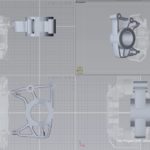
09 – parts are initiated in Inspire where loads are placed on them. They then come back to Evolve for smoothed modeling and refinement, as shown here.
NH: Okay, so you do your initial optimizations in Inspire. You then bring it into Evolve and design over that and make it nice, and then you take it back to Inspire and do a stress analysis on it. (see images 09 – 10). It will then give you a report—and it’s quite advanced now—you can actually see animated in real-time how the part flexes and moves. It also will give you a heat map of the part where in red is the maximum amount of stress and in blue will be no stress. And you can look at the forces in the red areas and say, ‘okay, those are within limits,’ and it’s going to be fine, the material can handle that and nothing is going to fail.
AFR: Okay, so as an industrial designer you are not a mechanical engineer, right, you are not trained in that engineering…
NH: Right.
AFR: So how easy was it to jump into a tool like solidThinking Inspire?
NH: Pretty easy actually. I have some friends who are engineers and sat with them for a couple hours with a cup of coffee and asked: ‘hey, does this make sense? Have I done this right?’ And 90 percent of the time I was on the money; and I just relied on some friends to cast their eyes over what I have done… What I have done with the piston is not exactly advanced, so I think I’m okay.
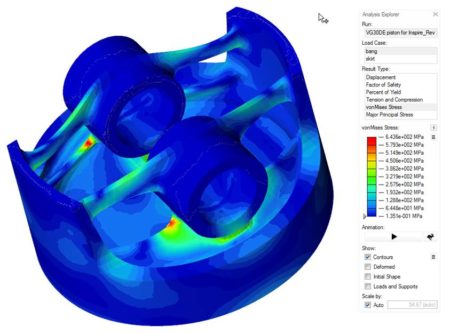
10 – an image of the Hardmarque Future Factories piston design after it’s been refined in Evolve and brought back into Inspire for stress testing.
AFR: So the way I look at this tool I kind of see it as a “green” or sustainable design tool, right? Because everything can become lighter. The things you make can be optimized so there is low waste and thus low weight and that helps save material, save fuel with shipping, and ultimately help save the environment. So what you are doing with the piston is just attacking one part of a car. And that’s a great place to start and to attack other similar problems and other parts of the car would ultimately lower its weight. But what if you looked at this more holistically? What if you approached this from the point-of-view of the whole car—with Inspire—what might that car look like?
NH: (laughs…) Not sure, that’s a great question. I thought the piston, if you can make it lighter and just as strong, would have a great value proposition in it. You know the lighter the piston the less fuel you have to burn to push that piston down to make the engine turn over to make your car move forward. So the lighter your internal components are the lower your carbon footprint is. And not only that, because it’s additive manufacturing and not subtractive manufacturing, you are not wasting 90 percent of a block of metal to achieve the finished product. You are only consuming the material you need for the product.
AFR: Do traditional processes really use that much metal?
NH: The rule of thumb, so I’ve heard, in aerospace manufacturing is 90 percent of machined material is waste. In the 3D printing machine, the metal powder is repurposed and run back through the machine again. So there is really no waste.
Organic Shapes, Green Engineering and Getting Started
AFR: I’m sure many product and industrial designers maybe reading this will want to know how one gets started developing organically driven and more sustainable designs. What tool did you learn first with solidThinking?

11 – solidThinking Evolve has superior modeling capabilities in areas like advanced parametrically driven fillets.
NH: I learned Evolve first because that’s just what I’m used to and I got trained to use 3D CAD modeling tools, so I just intuitively jumped into that one. And then I started experimenting with Inspire. But if I was an engineer I suppose I might start with Inspire and slowly work my way into Evolve. It really depends on your background and training.
AFR: I am sure the startup movement landed on your shores a few years ago too and lean manufacturing is a great place for innovation these days. Do you see the Australian market as a great channel or opportunity for the solidThinking company with Evolve and Inspire?
NH: Absolutely. I just had four or five people requesting quotes for Evolve over the past three days and they are all Mac users. They are all using Macintosh. It seems to be a unique selling point to the software, that it is written natively for the Mac OS X platform and has full feature parity with its Windows version.
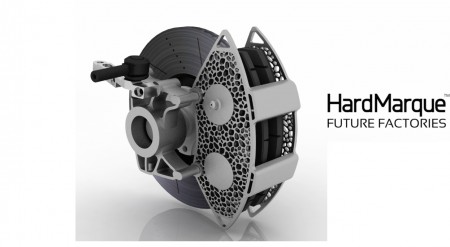
12 – Nick Hardman is the president of Hardmarque Future Factories and solidThinking expert in Australia. The design of a brake caliper system above created with solidThinking Inspire and Evolve software. (images courtesy of Hardmarque, all rights reserved).
AFR: What are your favorite features or do you have one? What do you like so much over other tools?
NH: Evolve is very powerful with boolean geometry modeling operations. It can create just about any shape creating watertight booleans all day long. (see images 07 -08). Another feature I like is the ability to create advanced fillets. (see image 11). In SolidWorks when you create fillets it’s one-size-fits-all. And if it doesn’t like your geometry it simply won’t create your fillet. Whereas in Evolve there are probably seven parameters you can control to fine-tune the curvature with the fillet…so you can get it to work. So it’s just a lot more powerful for that sort of thing.
I would say the last thing is probably the way it looks on the screen—there is just something about the graphics of the software. It just looks really good. It’s just very smooth and fluid and looks modern.
AFR: Thanks so much for talking to me about Hardmarque and the tools behind the your industrial design and additive manufacturing work.
NH: You are very welcome!
To learn more about Hardmarque visit them online here.
[Title Graphic: image of solidThinking Evolve with portions of the break caliper remaining material after being structurally determined.]

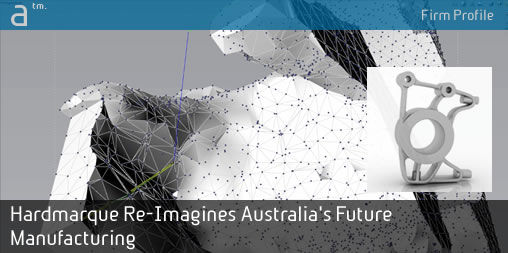
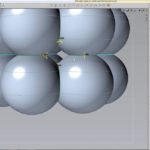



Reader Comments
#CAD Firm Profile: Nick Hardman—Hardmarque Re-Imagines Australia’s Future Manufacturing http://t.co/p8ENUqX0V0
#CAD Firm Profile: Nick Hardman—Hardmarque Re-Imagines Australia’s Future Manufacturing http://t.co/p8ENUqX0V0
Firm Profile: Nick Hardman—Hardmarque Re-Imagines Australia’s Future Manufacturing http://t.co/ExWhNuMqpZ via @architosh
Firm Profile: Nick Hardman—Hardmarque Re-Imagines Australia’s Future Manufacturing http://t.co/ExWhNuMqpZ via @architosh
http://t.co/YFlfxdhIMY — learn about “additive manufacturing” printing 3D parts and solidThinking in MCAD-design
Firm Profile: Nick Hardman—Hardmarque Re-Imagines Australia’s Future Manufacturing @vicgasco @Trede3D http://t.co/UqvR5aZ43Y
Firm Profile: Nick Hardman—Hardmarque Re-Imagines Australia’s Future Manufacturing @vicgasco @Trede3D http://t.co/UqvR5aZ43Y
http://t.co/YFlfxdhIMY — learn about “additive manufacturing” printing 3D parts and solidThinking in MCAD-design
RT @architosh http://t.co/v36VX3OKWw — learn about “additive manufacturing” printing 3D parts and solidThinking in MCAD-design
RT @architosh http://t.co/v36VX3OKWw — learn about “additive manufacturing” printing 3D parts and solidThinking in MCAD-design
RT @3dprint_news: RT @architosh http://t.co/v36VX3OKWw — learn about “additive manufacturing” printing 3D parts and solidThinking in MCAD-…
RT @3dprint_news: RT @architosh http://t.co/v36VX3OKWw — learn about “additive manufacturing” printing 3D parts and solidThinking in MCAD-…
Comments are closed.